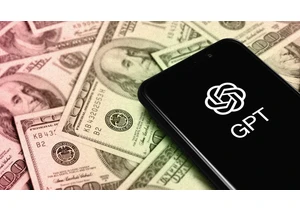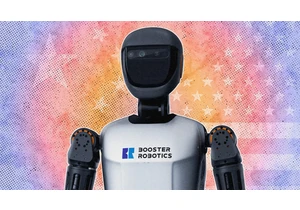Artificial intelligence isn’t creative in the same way that people are. It doesn’t understand inspiration. But that doesn’t mean real UX designers can’t use it. AI can help a designer be more efficient and creative, and do a few more things that might be surprising. Here are six tips for open-minded designers who are interested in what AI can do for them.
Brainstorming
A designer friend of mine once sniffly described brainstorming as “throwing spaghetti at a picture frame and hoping you get a Picasso sketch,” but I’ve found it to be a useful part of the design process. A tool like Uizard can help: Feed it a description of your project and it can create a mood board full of logo ideas, website wireframes, or other inspirations. It’s much more focused and useful than general-purpose AI image generation tools, and can move a project further into the design process.
Wireframe to HTML
Every designer has had this experience: A client hands you a photo and says “Make my website look like this.” AI to the rescue: Fronty can take an image and convert it into an HTML template. It’s a bit more sophisticated than other systems of this type, though, because it can recognize structures and elements in the image and render them into an HTML template that will work with dynamic content. It creates a custom Bootstrap template, so it will work with most content systems. It also optimizes the web page for multiple devices and speed.
Sketch to graphics
Visual thinkers will love this one: It uses AI to convert a sketch into a vector drawing. AutoDraw, from Google, is an AI sketch load, where you sketch something on-screen and it suggests vector image versions of things that look similar. Think of it as an AI version of Pictionary, but for people who are constantly saying “It’s shaped like a thing with a wobbly bit on top.”
Text to image
There are plenty of AI systems that can create an image from a text description, but many are built on weak foundations when it comes to their training sources. Shutterstock is a reputable stock photo agency that has embraced AI: It pays the artists whose work is used in the AI creation, and also provides indemnity for commercial use of the generated images. That means you’ll have the same legal protections as using a stock photo.
Improve UI study feedback
Lots of designers use focus groups and user interface studies to test out a design, but Lookback has an interesting spin on this: Its Eureka AI system takes the raw materials of these sessions and summarizes the results for you, making it easier to find the important parts that help you create more usable designs.
Mock-up designs
Want to see how your new logo might look on a piece of merch? Kittl is a new AI design platform that can take a logo and produce mock-ups of how it would look on a T-shirt, label, business card, or baseball cap. It’s also an incredibly flexible platform for creating logos and other vector designs, with thousands of templates and some great tools. Ever had a client who wanted the red in the logo to be a bit redder? Kittl allows you to tweak colors with a mouse click, then see the changes across all of your mock-ups in a couple of seconds.
Is your work being used to train AI?
AI works by training the system using millions of photos or videos. In AI parlance, this is the data set. Does this include your work? It’s quite likely, as many AI companies have grabbed work from websites and other sources without considering copyright or consent. One way to find out is the website Have I Been Trained, an index of many of the popular data sets used by AI companies. It works by searching the captions that describe the image.
Have I Been Trained offers a feature that will flag your work to not be used for AI training, but that only works if the AI company uses the system to check for consent. The ones that do include popular AI sites like Hugging Face, Stability AI, and ArtStation. Most AI companies have opt-out policies, but at the moment there is no really effective way to stop your work from being used if it is available on the internet.
Adobe, meanwhile, is adding AI to all of its products. The company has said that no customer data is used to train this AI, although it says it retains the right to use content submitted to the Adobe stock market to train AI. It isn’t clear whether any of that content has actually been used: In the same FAQ, the company says, “Adobe Stock’s editorial content is not used to train Adobe Firefly’s generative AI models,” while two questions later, it says, “We are training our initial commercial Firefly model on licensed content, such as Adobe Stock.”
Either way, it’s probably best to assume that anything you have uploaded to the Adobe stock market may be used for AI. The company does say that those whose work has been used to create its AI models from Adobe Stock have been compensated.
Commercial use of content generated by Adobe AI is fine, but with one limitation: According to Adobe’s terms of use, you can’t use content created by the beta test versions of apps or the Firefly AI generator. The AI tools are out of beta now, but you’re still restricted from using images if you are enrolled in the company’s Tech Preview or Public Beta programs. Many designers use these to get access to the latest features in Illustrator and Photoshop, but that should be avoided if the work is commercial.
Chcete-li přidat komentář, přihlaste se
Ostatní příspěvky v této skupině


The role of the CFO is evolving—and fast. In today’s volatile business environment, finance leaders are navigating everything from unpredictable tariffs to tightening regulations and rising geopol

In June, Google released its newest smartphone operating system, Android 16. The same month, Apple previewed its next smartphone oper


I’ve worked at the bleeding edge of robotics innovation in the United States for almost my entire professional life. Never before have I seen another country advance so quickly.
In


Restaurant industry leaders are excited for
